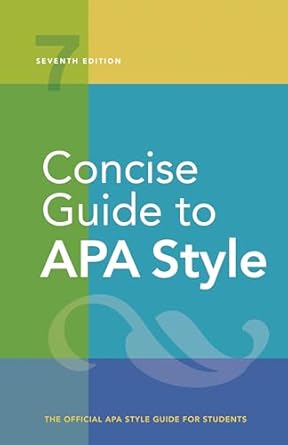[toc]
biasfree language sexual orientation gender identity
Concise Guide to APA Style: 7th Edition (OFFICIAL)
Page 100 Review
Understanding Bias-Free Language: A Deep Dive into Sexual and Gender Minorities
This excerpt from a language guide delves into the importance of using respectful and accurate terminology when discussing sexual orientation and gender identity.
It highlights the evolving nature of these terms and the necessity of self-identification.
Let’s break down the key points:
The Nuances of Self-Identification
The passage emphasizes the significance of allowing individuals to define themselves. “example, a person who identifies as lesbian might describe herself as a woman (gender identity) who is attracted to women (sexual orientation)—the sexual orientation label of “lesbian” is predicated on a perceived or known gender identity of the other person.
However, someone who identifies as pansexual might describe their attraction to people as being inclusive of gender identity but not determined or delineated by gender identity.
Note that these definitions are evolving and that self-identification is best when possible.”
This illustrates how labels like “lesbian” and “pansexual” carry different meanings and implications depending on the individual’s perspective.
For instance, “lesbian” often implies an understanding of the gender identity of those the person is attracted to, while “pansexual” may signify attraction regardless of gender.
The core message is that individuals should have the agency to define their own identities.
Umbrella Terms and Avoiding Inaccuracy
The text then addresses the use of umbrella terms for groups:
“Use the umbrella term “sexual and gender minorities’ to refer to multiple sexual and/or gender minority groups, or write about “sexual orientation and gender diversity” (these terms are used by the Office on Sexual Orientation and Gender Diversity at APA and the Sexual & Gender Minority Research Office at the National Institutes of Health).
Abbreviations such as LGBTQ, LGBTQ+, LGBTQIA, and LGBTQIA+ may also be used to refer to multiple groups.
The form “LGBT” is considered outdated, but there is not consensus about which abbreviation including or beyond LGBTQ to use.
If you use the abbreviation LGBTQ (or a related one), define it (see Section 5.13) and ensure that it is representative of the groups about which you are writing.
Be specific about the groups to which you refer (e.g., do not use LGBTQ and related abbreviations to write about legislation that primarily affects transgender people; instead, specify the impacted group).
However, if in doubt, use one of the umbrella terms rather than a potentially inaccurate abbreviation.”
While abbreviations like LGBTQ+ are common, the excerpt cautions against their indiscriminate use.
It suggests defining the abbreviation and ensuring it accurately represents the groups being discussed.
Specificity is crucial; it’s better to use umbrella terms like “sexual and gender minorities” or “sexual orientation and gender diversity” if there’s a risk of misrepresenting the population.
Precision in Orientation Terminology
The excerpt also highlights the importance of defining terms for orientations to avoid ambiguity:
“When using specific terms for orientations, define them if there is ambiguity.
For example, the adjective “gay” can be interpreted broadly, to include all genders, or more narrowly, to include only men, so define “gay” when you use it in your paper, or use the phrase “gay men” to clarify the usage.
By convention, the term “lesbians” is appropriate to use interchangeably with “lesbian women,’ but “gay men’ or “gay people” should be used, not “gays.””
For example, the word “gay” can have different interpretations.
To avoid confusion, the guide suggests being explicit – using “gay men” instead of just “gay” when referring specifically to men.
Similarly, while “lesbians” and “lesbian women” are interchangeable, “gay men” or “gay people” are preferable to “gays.”
Avoiding Inaccurate and Pejorative Terms
Finally, the passage addresses the use of outdated and potentially harmful language:
“Inaccurate or Pejorative Terms.
Avoid the terms “homosexual” and “homosexuality.” Instead, use specific, identity-first terms to describe people’s sexual orientation (e.g., bisexual people, queer people).
These specific terms refer primarily to identities and to the culture and communities that have developed among people who share those identities.
It is inaccurate to collapse these communities into the term “homosexual.” Furthermore, the term “homosexuality” has been and continues to be associated with negative stereotypes, pathology, and the reduction of people’s identities to their sexual behavior.
Homoprejudice, biprejudice, homonegativity, and similar terms”
The guide strongly advises against using terms like “homosexual” and “homosexuality.” These terms are considered outdated and often carry negative connotations, associating sexual orientation with pathology and reducing individuals to their sexual behavior.
Instead, it recommends using specific, identity-first terms like “bisexual people” or “queer people,” which emphasize identity and community.
Conclusion
In conclusion, this excerpt provides essential guidelines for using bias-free language when discussing sexual orientation and gender identity.
It emphasizes the importance of self-identification, precise terminology, and avoiding outdated and potentially harmful language.
By adhering to these principles, we can foster a more inclusive and respectful environment for all.
Buy full ebook for only $18: https://www.lulu.com/shop/american-psychological-association/concise-guide-to-apa-style-7th-edition-official/ebook/product-rmzpq54.html?page=1&pageSize=4


Leave a Reply